Hi Hi!
🌵🌵
This time, there's a fun plant pot creation made from materials that would usually go in the trash. Its creation is not extremely complicated, what I would advise is that you have care and patience, so you could avoid hurting yourself with some of the materials to use.
Although, before tackling the elaboration of this cute pot made with tin. Let's give a brief review of the different types of most common pots and what are the characteristics that differentiate one from the other.
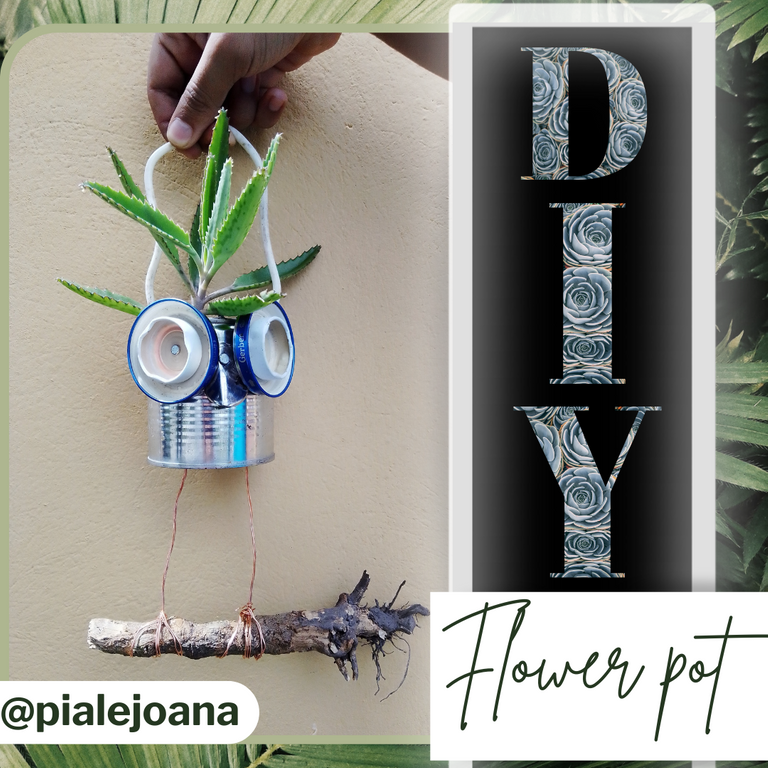

Types of Pots:
The variety of pots has increased in recent years, as well as the design and style. But, in general, the most common pots on the market according to the base material, I could then say that:
- Terracotta or Clay: They are a very common type of pots, they are characterized by coming in various shapes and sizes, but one of the most striking features is that their composition at the material level confers a warm and airy climate to the roots. As for drainage, it is much faster and more controlled, thus avoiding the unfavorable micro-environment. In addition to this, it is a pot that can be used for both indoor and outdoor plants, let's say because of its temperature regulation. One of the disadvantages could be that most of them turn out to be heavy, a fact that makes them a bit complicated to transport.
- Plastic: They are much lighter, as well as cheaper compared to other materials. But, these do not have pores, which causes the humidity time to be longer. The risks and the amount must be very moderate. Certainly plastic pots are cute and come in many shades of colors, but you must keep in mind that the temperature increases within the substrate when the pot is made of this material and is exposed to the sun for a long time. Obviously, this will not please the roots. Another fact to take into account is that when exposed to the sun for a long time, the plastic tends to "brown".
- Metal: From this side of the world they are somewhat unusual, and this is because I live in a place with high temperatures. This material is light and resistant, however we must be careful where we will place the pot. Exposing a metal pot to prolonged hours of sunlight will greatly increase the temperature and therefore affect the roots. This type of pot is perfect for placing indoors, airy and shaded spaces.
- Cement: Cement pots are said to be a similar option to terracotta pots, and they share similar characteristics including the weight of the object. The variety of models is wide, in addition to the fact that it has also been presented as an option indicated for growers of plants and succulents, since they make their own pots.
- Resin: It is currently a very fashionable material, due to the versatility of designs and colors that can be achieved. They are light like plastic, but maintain a soft internal temperature that is more suitable for plants. One of the differential details is that the price variation is remarkable. One of the advantages is that they are more resistant to sun exposure and maintain color better, thus prolonging the useful life of the product.
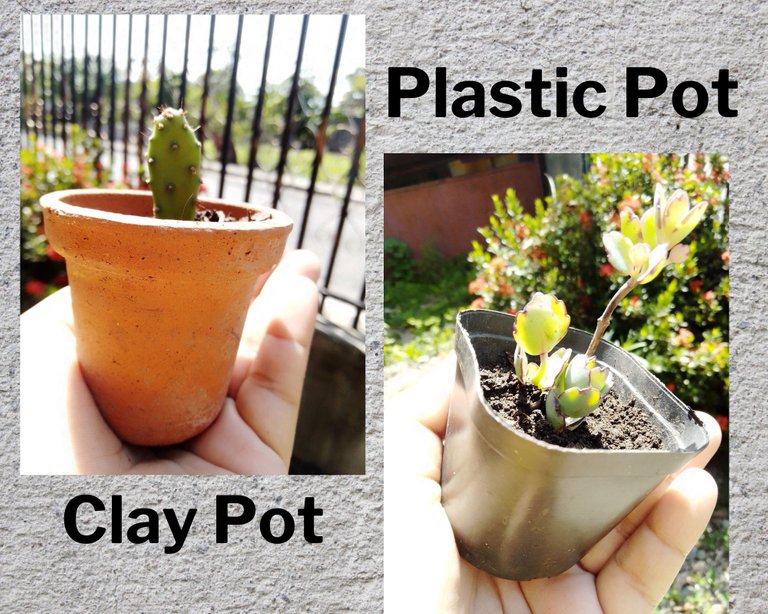

Below is a step by step to make this hanging pot:
This is a cute and flirty pot, made with waste materials. For the body I have used a can, the eyes are made of metal caps in different sizes and pierced by a nail. For details such as the legs I have used a piece of unused copper, and for the necklace a piece of covered wire. Honestly, they are not complicated materials to obtain and the result is peculiar, a different pot for the collection.
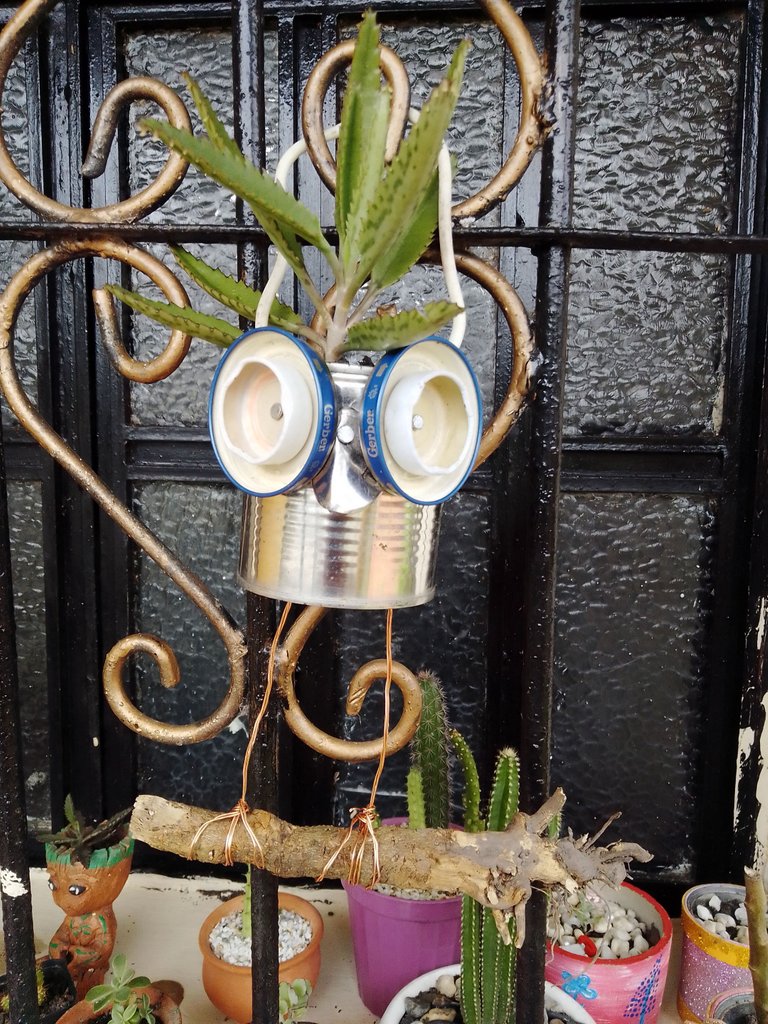
Let's start the assembly:
1.- We will take the can and with the nail we will make holes in the upper part for the drainage of the water and at the same time, to be able to insert the copper strands that will shape the legs. In addition, we will make a couple of lateral holes, which is where we will insert wire to form the hanger.
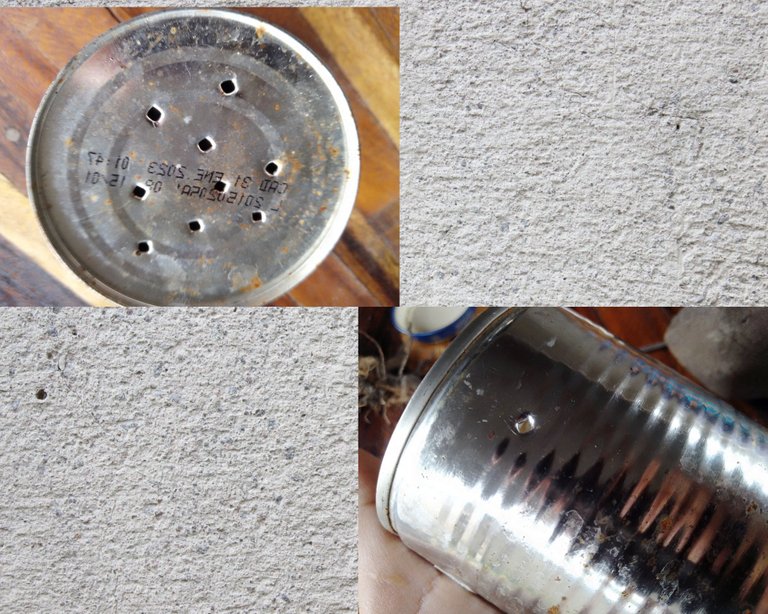
2.- We insert the upper hanger and the wire that will shape the owl's legs.
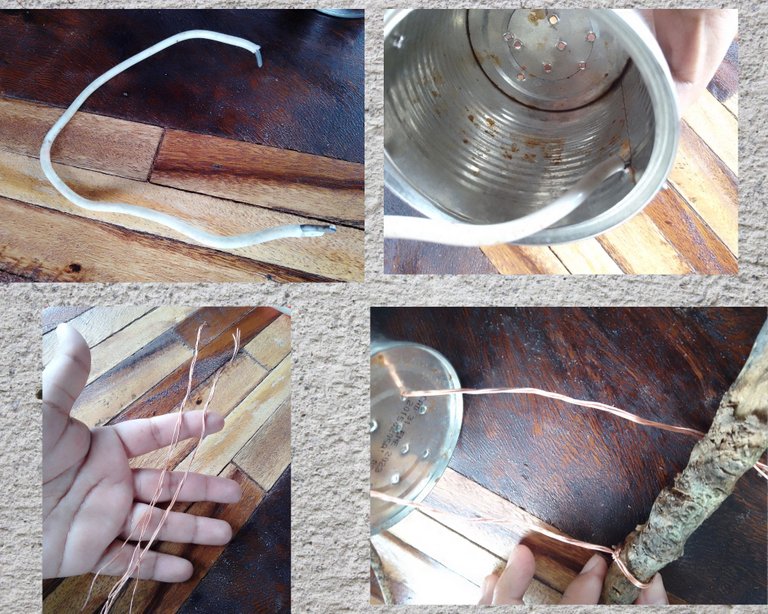
3.- We will form the eyes by going through the lids with the nail right in the center, then we will place them in the can. With a piece of metal, in my case I used a cover from a broken watch, we formed the nose.
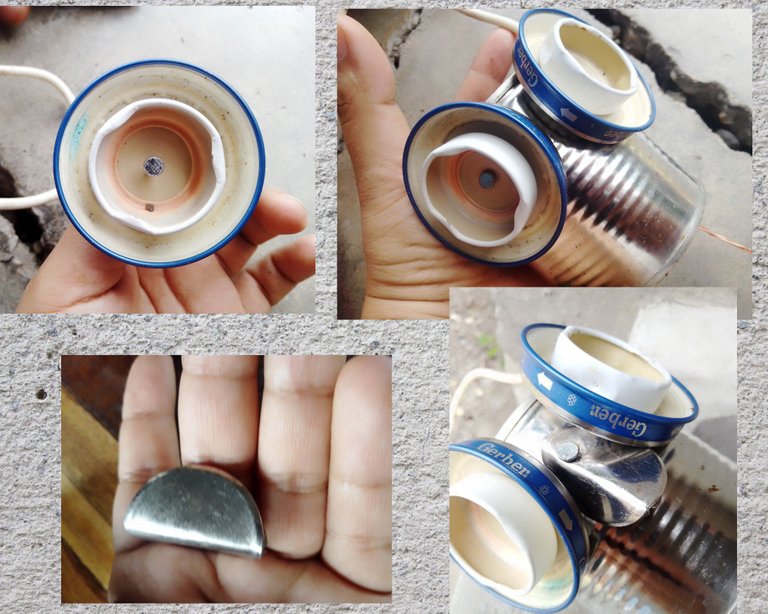
As a decoration we will place a piece of branch between the legs. We fill with soil and plant our succulent. What a disheveled tone!
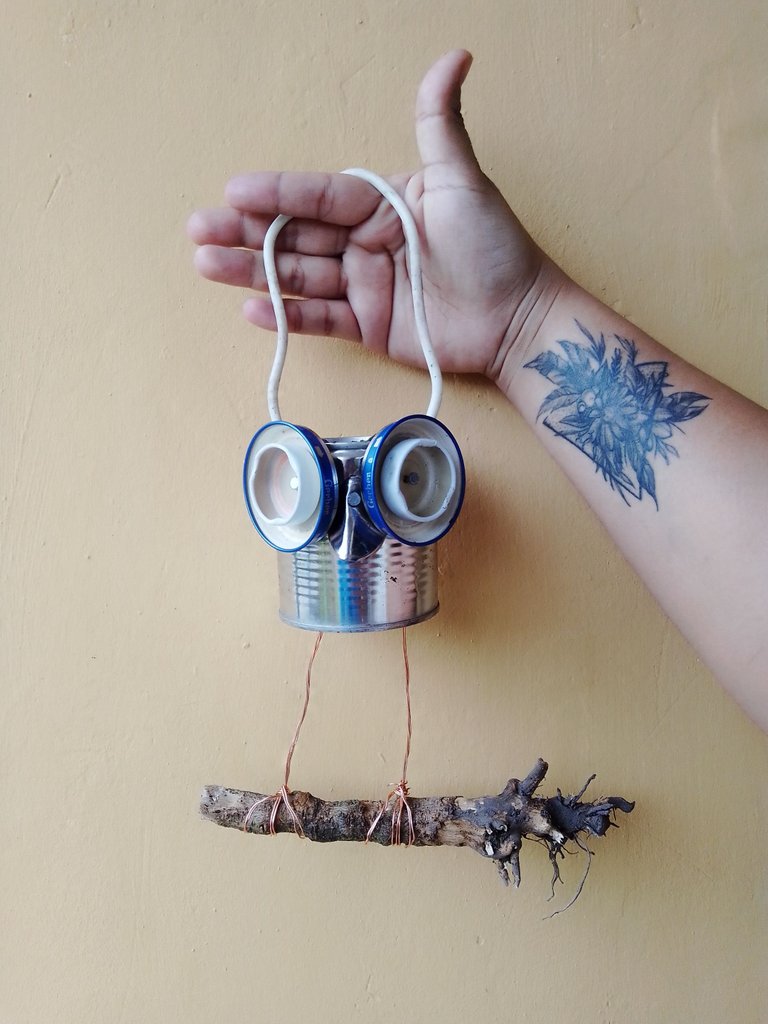
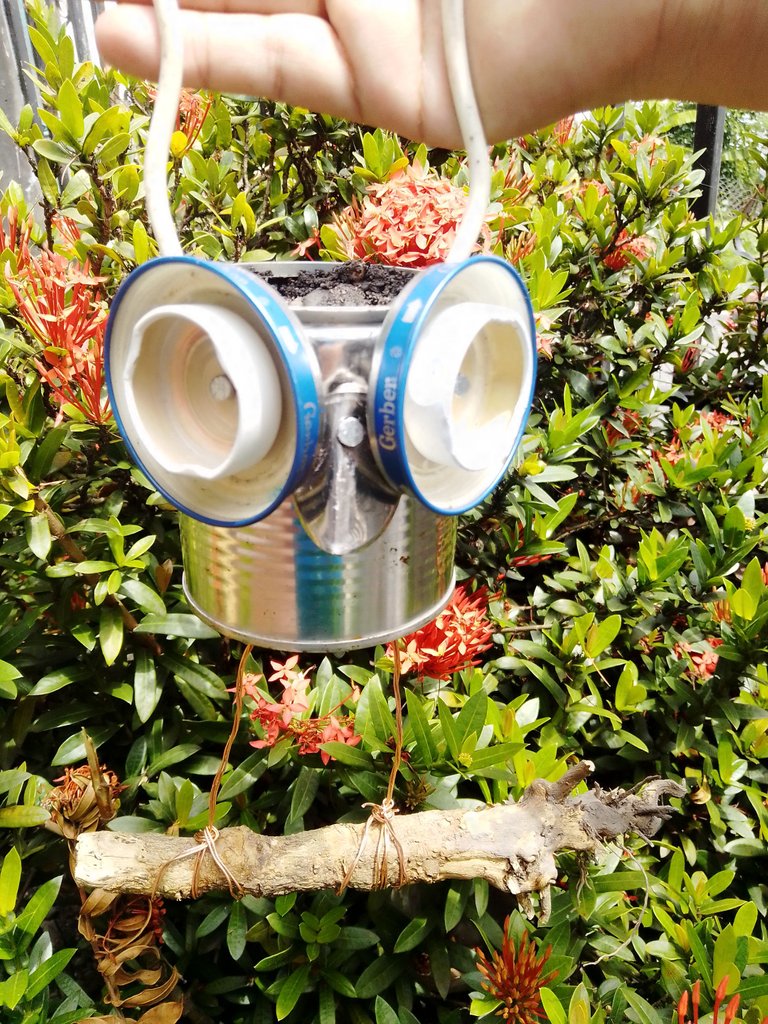
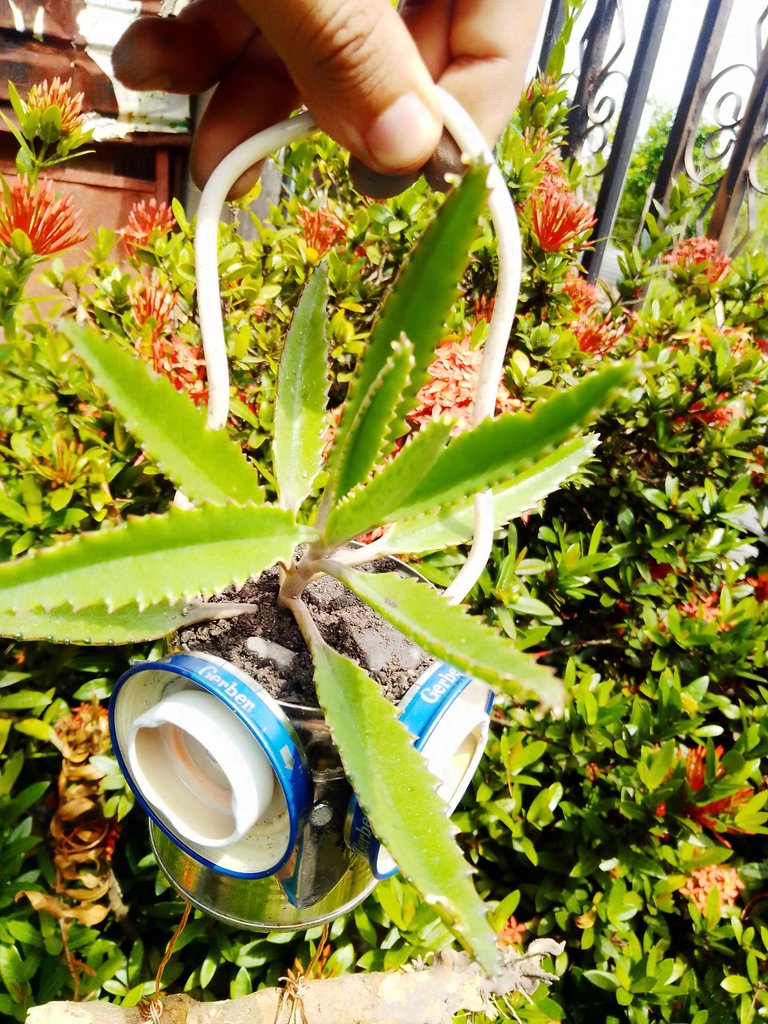
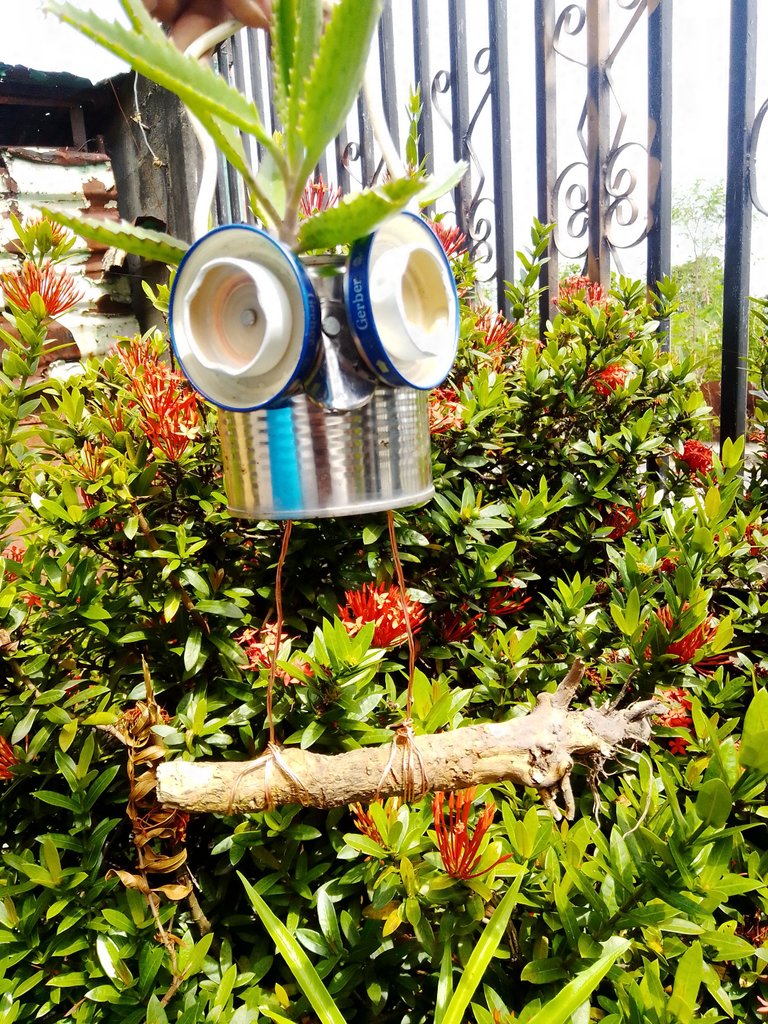
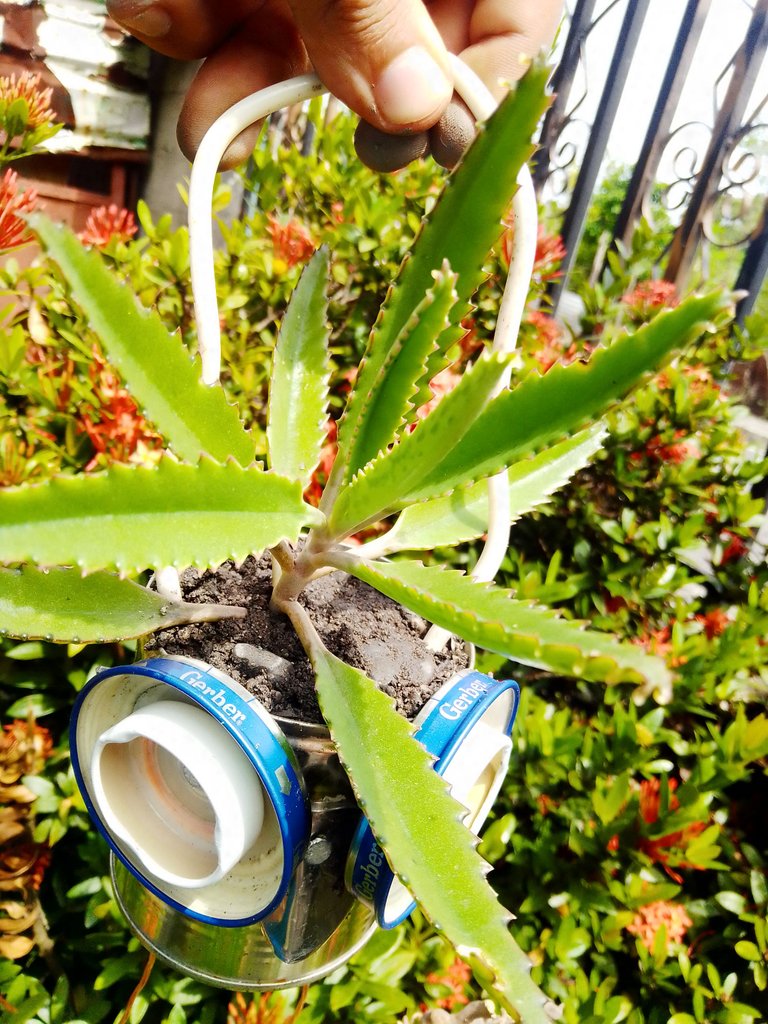
The importance of the correct pot will depend on several factors, such as size, drainage, temperature behavior and price. Selecting the right pot is a way to show your plant that you appreciate it and take into account the requirements that have been bestowed on it by nature.
Regarding this type of pot made with a metal can, I can point out that it is ideal for planting plants with scattered and striking structures. In addition to this, I can point out that it is special for shady conditions, not to expose it directly to the sun for long hours. Being exposed to the sun could affect the healthy growth of plant roots.

Thank you for your attention, sincerely: Ana Pialejo, under my username: @pialejoana. Banner and text dividers created by me using Canva. Texts of my authorship. Photos of my authorship, belonging to my cactus collection. English translation using: Google Translate.


[ESPAÑOL]
Título: Tipos de macetas. Extra: Sección DIY: Maceta hecha con Material Reciclable. ¡Un búho desaliñado!
¡Hola, Hola!
🌵🌵
Esta vez, hay una divertida creación de una maceta elaborada con materiales que usualmente podrían ir a parar entre la basura. Su creación no es sumamente complicada, lo que si aconsejaría es que dispongas de cuidado y paciencia, así podrías evitar lastimarte con algunos de los materiales a usar.
Aunque, antes de abordar la elaboración de esta linda maceta hecha con lata. Demos un repaso leve de los diferentes tipos de macetas más comunes y cuales son las características que las diferencian una de la otra.


Tipos de Macetas:
La variedad de macetas ha incrementado en los últimos años, así como también el diseño y estilo. Pero, en vías generales las macetas más comunes en el mercado acorde al material base, podría entonces decir que:
- Terracota o Barro Cocido: Son un tipo de macetas muy comunes, se caracterizan por presentarse en variadas formas y tamaños, pero una de las características más llamativas es que su composición a nivel de materia confiere un clima cálido y aireado a las raíces. En cuanto a drenaje, es mucho más rápido y controlado, evitando así el micro ambiente desfavorable. Aunado a ello, es una maceta que puede ser usada tanto en plantas de interiores como de exteriores, digamos que por su regulación de temperatura. Una de las desventajas, podría ser que en su mayoría, resultan ser pesadas, hecho que las vuelve un poco complicadas de transportar.
- Plástico: Son mucho más ligeras, además de económicas delante de otros materiales. Pero, éstas no tienen poros, lo que ocasiona que el tiempo de la humedad sea más prolongado. Los riegos y la cantidad, deben ser muy moderados. Ciertamente las macetas de plástico son lindas y vienen en muchos tonos de colores, pero debes tener presente que la temperatura aumenta dentro del sustrato cuando la maceta es de este material y se ve expuesta prolongadamente al sol. De manera obvia, esto no agradará a las raíces. Otro hecho a tomar en cuenta, es que al ser expuestas prolongadamente al sol, el plástico tiende a "tostarse".
- Metal: Desde este lado del mundo son un tanto inusuales, y esto se debe a que vivo en un sitio de altas temperaturas. Este material es ligero y resistente, sin embargo debemos tener cuidado de donde ubicaremos la maceta. Exponer a horas prolongadas de sol a una maceta de metal, hará que aumente grandemente la temperatura y por lo tanto afectará a las raíces. Este tipo de maceta es perfecta para colocar en interiores, espacios aireados y con sombra.
- Cemento: Se dice que las macetas de cemento son una opción similar a las de barro cocido, y que comparten características similares incluyendo el peso del objeto. La variedad de modelos es amplia, además de que también se ha presentado como una opción indicada para los cultivadores de plantas y suculentas, puesto que elaboran sus propias macetas.
- Resina: Es actualmente un material muy de moda, debido a la versatilidad de diseños y colores que se pueden lograr. Son ligeras al igual que el plástico, pero mantienen una temperatura interna suave y más idónea para las plantas. Uno de los detalles diferenciales, es que la variación de precio es notable. Unas de las ventajas es que son más resistentes a la exposición del sol y mantienen de mejor manera el color, prolongando así la vida útil del producto.


A Continuación un paso a paso para la elaboración de esta maceta colgante:
Esta es una linda y coqueta maceta, elaborada con materiales de desecho. Para el cuerpo he usado una lata, los ojos estan compuestos de tapas de metal en diferentes tamaños y atravesadas por un clavo. Para detalles como las patas he usado un trozo de cobre sin uso, y para el golgante un trozo de alambre cubierto. Sinceramente, no son materiales complicados de obtener y el resultado es peculiar, una maceta diferente para la colección.

Iniciemos el armado:
1.- Tomaremos la lata y con el clavo haremos agujeros en la parte superior para el drenaje del agua y a la vez, para poder insertar luego las hebras de cobre que daran forma a las patas. Además, haremos un par de agujeros laterales que es donde insertaremos alambre para formar el colgadero.

2.- Le insertamos el colgadero superior y el alambre que dará forma a las patas del buho.

3.- Formaremos los ojos atravesando las tapas con el clavo justamente en el centro, estos luego los colocaremos en la lata. Con un trozo de metal, en mi caso he usado una tapa de un reloj descompuesto, formamos la nariz.

En manera de decoración colocaremos un trozo de rama entre las patas. Rellenamos con tierra y plantamos nuestra suculenta. ¡Qué tono de lo más despeinado!





La importancia de la maceta correcta dependerá de varios factores, como tamaño, drenaje, comportamiento frente a temperaturas y precio. Seleccionar la maceta adecuada es una manera de manifestar a tu planta que la aprecias y tomas en cuenta los requerimientos que por naturaleza se le han conferido.
Respecto a este tipo de maceta elaborada con una lata de metal, puedo señalar que es ideal para sembrar plantas con estructuras dispersas y llamativas. Aunado a ello, puedo señalar que es especial para condiciones de sombra, no exponer directamente al sol en horas prolongadas. Estar expuesta al sol, podría afectar el sano crecimiento de las raíces de las plantas.

Gracias por su atención, atentamente: Ana Pialejo, bajo mi usuario de: @pialejoana. Banner y separadores de textos creados por mí usando Canva. Textos de mi autoría. Fotos de mi autoría, pertenecientes a mi colección de cactus. Traducción al inglés usando: Google Traductor.

Que genial te quedó! Debo confesar que al principio no entendía lo que era, pero conforme fui pasando las fotos dije: Aaaaahh! es un buho! jajaja si soy caida de la mata.😅 Te quedo genial. Es como un robotcito. ♥
Jajaja. Eres chistosa. Jaja. 😂😂😂
Si, es un búho despeinado, el cabello lo da la planta suculenta. 😂😂
Gracias, gracias. 🥰
Gracias por tan apreciado apoyo! 🥰
Que bellaa maceta. No me había dado cuenta que era un búho y la verdad abrí un poco mi mente y me di cuenta. Muy linda. Quiero una.
Gracias, y jaja. Creo que esa es la primera impresión que causa, como un: ¿Qué es esto?
Gracias por pasar.
:)
Un post muy educativo en cuanto al tipo de macetas que podemos usar y los contras y pros de cada una. La maceta que elaboraste te ha quedado genial. Gracias por compartir. Saludos.
Si, me gustó la temática a plantear debido a que muchas veces vemos las macetas como "todas iguales", hecho que para nada es cierto.
Gracias por pasar.
Saludos.
✨
The rewards earned on this comment will go directly to the people sharing the post on Twitter as long as they are registered with @poshtoken. Sign up at https://hiveposh.com.
😍 Que fascinante, y que lindo. Me encanto, cuanta creatividad. Me gustan muchos las plantas y es una idea excelente para decorar y que luzcan en el jardín. Nos pusimos de acuerdo para hacer búhos hoy jajajaja. Gracias por compartir tu trabajo. Bella noche para ti. Éxitos.✨
Gracias, que amable. Y si, sin querer nos pusimos de acuerdo. Tus búhos estan divinos... 🥰
Amén, éxitos para ti también.
🌻
Thank you for sharing this amazing post on HIVE!
non-profit curation initiative!Your content got selected by our fellow curator @hafizullah & you just received a little thank you via an upvote from our
You will be featured in one of our recurring curation compilations and on our pinterest boards! Both are aiming to offer you a stage to widen your audience within and outside of the DIY scene of hive.
Join the official DIYHub community on HIVE and show us more of your amazing work and feel free to connect with us and other DIYers via our discord server: https://discord.gg/mY5uCfQ !
If you want to support our goal to motivate other DIY/art/music/homesteading/... creators just delegate to us and earn 100% of your curation rewards!
Stay creative & hive on!
Thank you for the support! 🤗
Que creatividad tienes, a mi nunca se me hubiera ocurrido hacer esto, pero ahora con tu tutorial creo que lo tomaré en cuenta, en mi casa hay un montón de suculentas, pero no las cuido yo, aunque me encantan soy muy lindas la verdad. A la que sembraste en la maceta que hiciste le decimos boca de caimán, creo que es más conocida por llamarse boca del diablo, pero ese nombre es muy feo jaajajjaja. Saludos amiga, muy bonita tu creación! <3
Gracias. Que amable. Y bueno, realmente las suculentas no tienen un cuidado extenso. Creo que con solo ajustar riego de acuerdo a la temperatura, saber reconocer algunos detalles y listo. Además de una limpieza detallada cada cierto tiempo que se amerite. Y si, algo así le llaman a esa. Aquí en mi casa, tengo muchas de esas, son demasiado fáciles de reproducir, debido a que ellas mismas sacan sus retoños y lo dispersan. Más bien, es tanta su reproducción natural que a veces se convierten en malezas en algunas áreas. 😂😂
Gracias por pasar. Saludos.
🤗
Estás super chulo , de verdad me encanta 😍 cómo quedó
So many lovely creations here, wow! I really love the idea of using old material for something new and useful :) Way to go! Thanks for sharing this creative tutorial with us, I´m glad it was nominated to my latest upovte giveaway, it was my pleasure to support it! Greetings from Prague :)